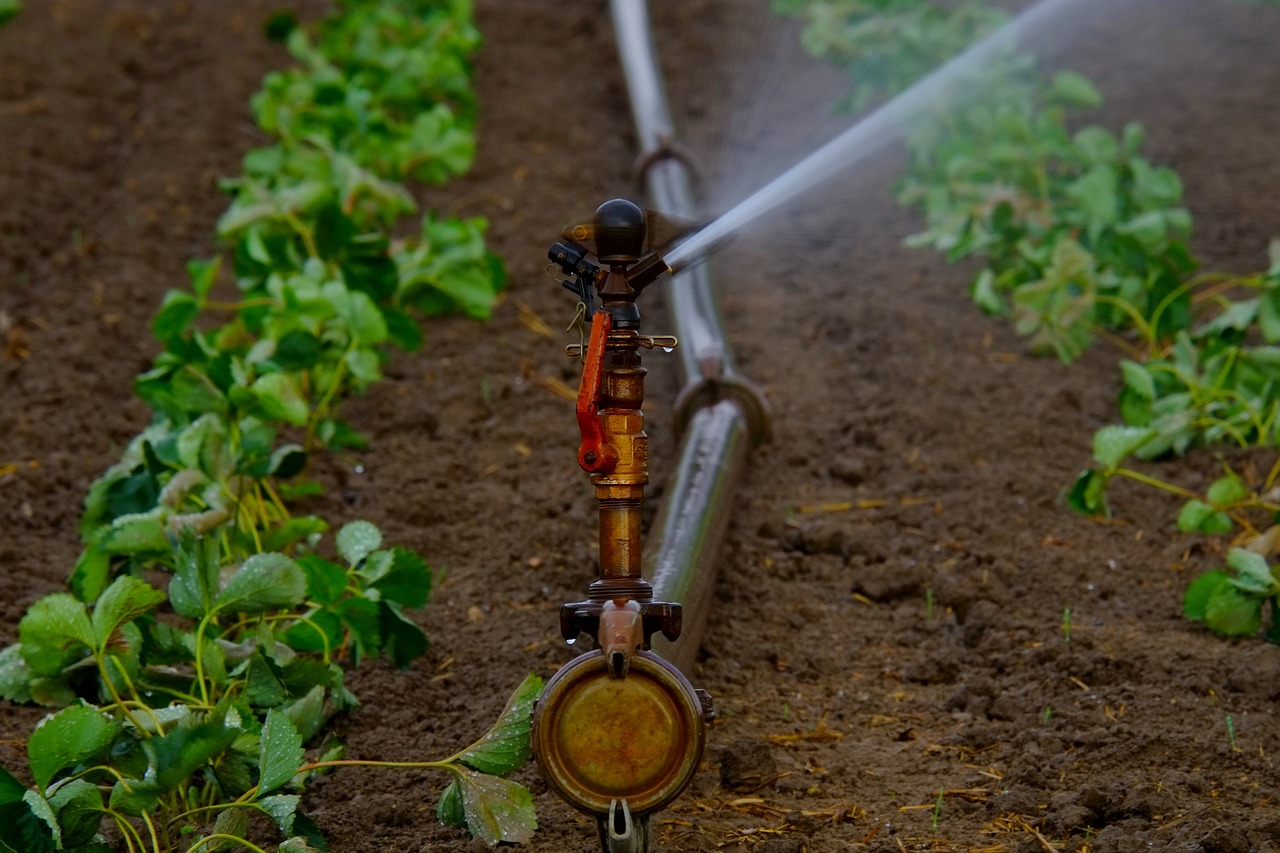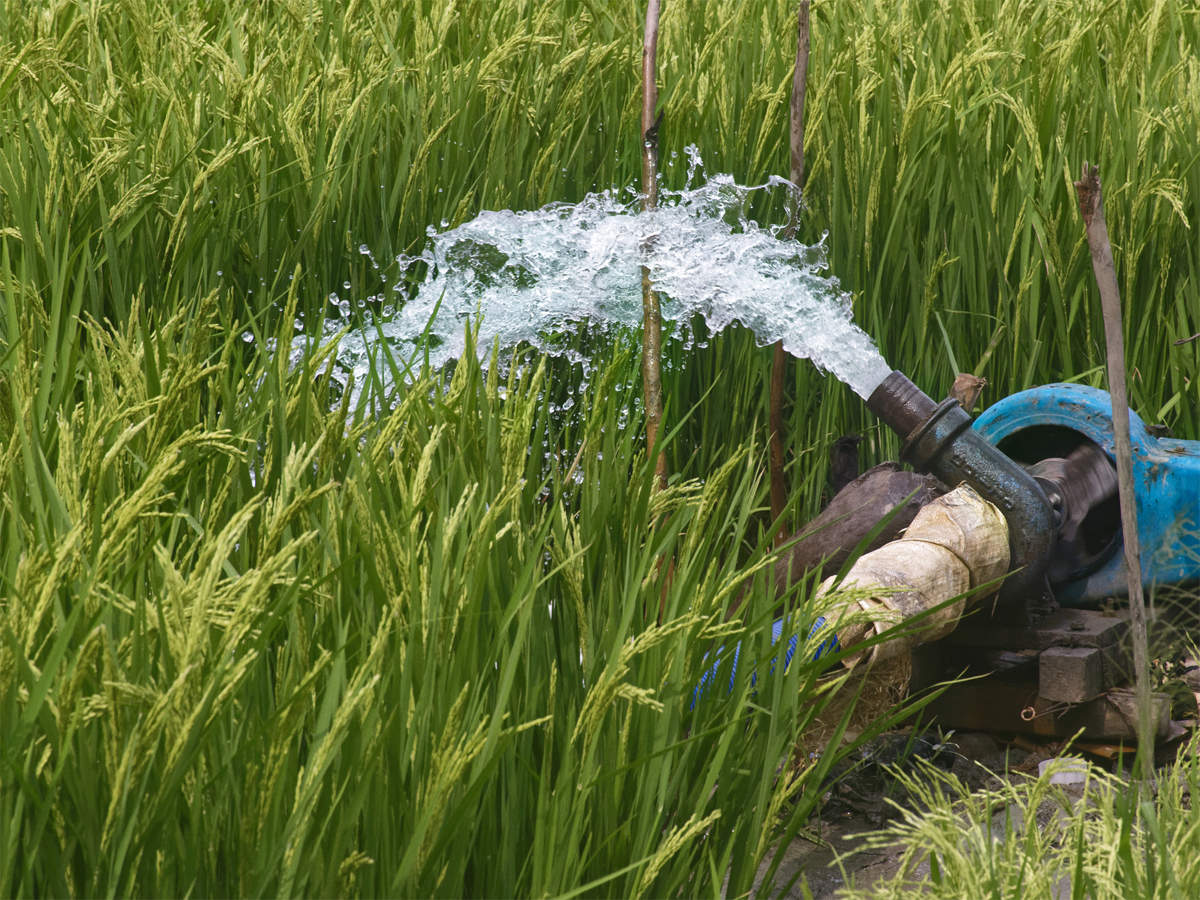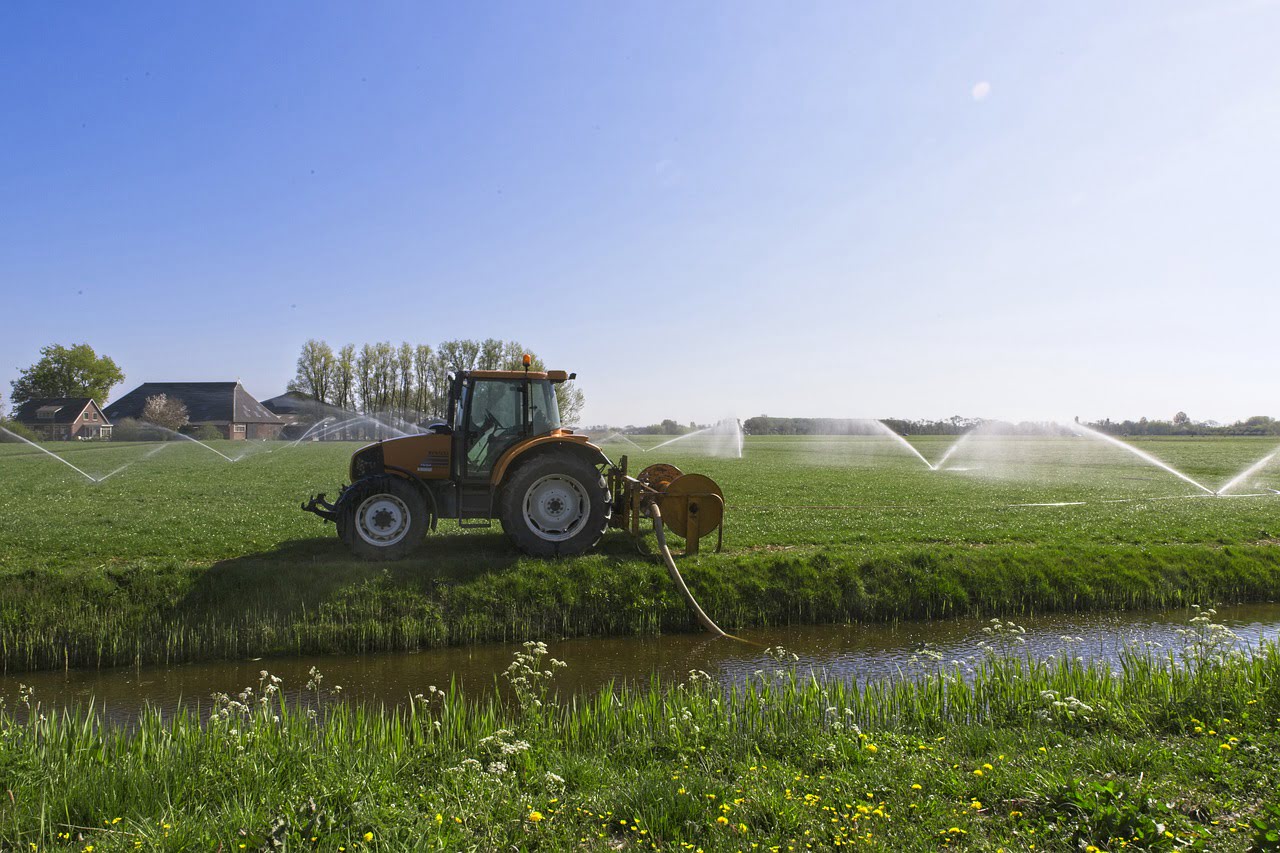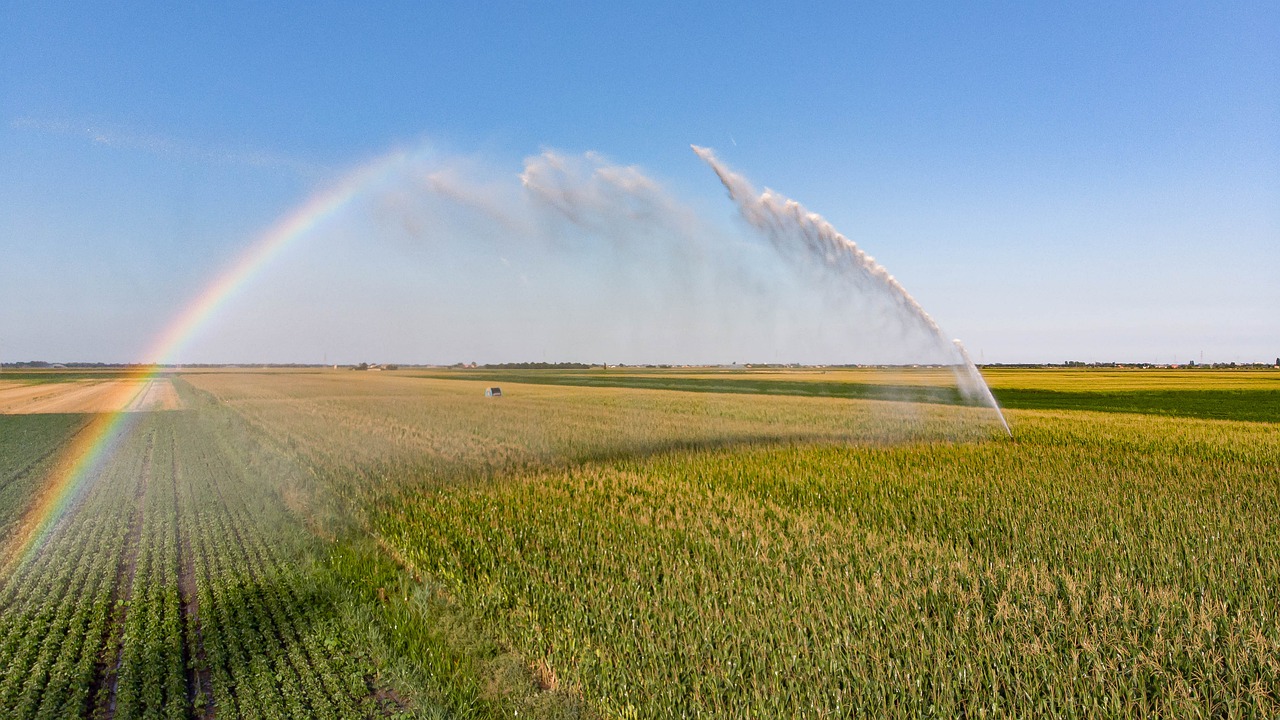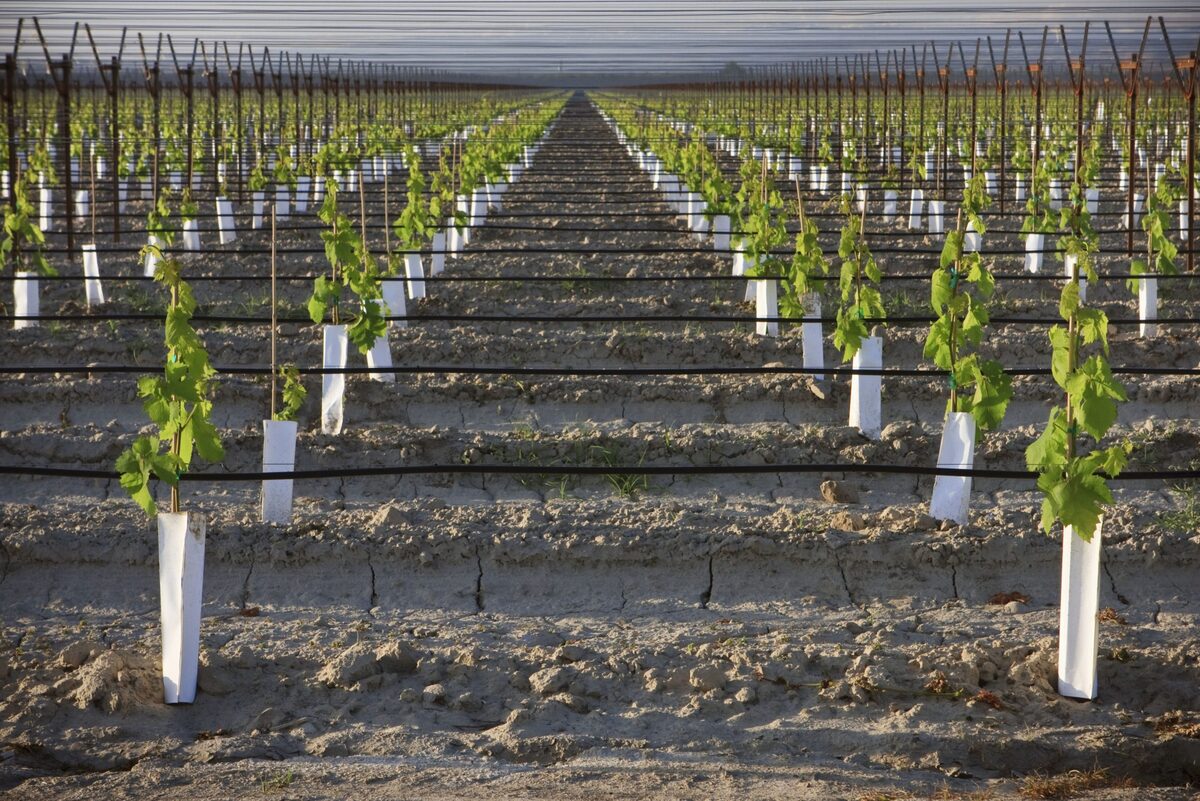Home>Gardening News and Trends>Latest News>Why Did The Mesopotamians Create Irrigation Systems?


Latest News
Why Did The Mesopotamians Create Irrigation Systems?
Modified: January 22, 2024
Explore the fascinating history of Mesopotamia and uncover why the innovative Mesopotamians developed advanced irrigation systems. Stay updated with the latest news on ancient civilizations.
(Many of the links in this article redirect to a specific reviewed product. Your purchase of these products through affiliate links helps to generate commission for Chicagolandgardening.com, at no extra cost. Learn more)
Table of Contents
Introduction
Welcome to the ancient land of Mesopotamia, a region nestled between the Tigris and Euphrates rivers. The civilizations that flourished in this fertile crescent left behind an extraordinary legacy that continues to awe us today. Among their many remarkable achievements, the development and utilization of irrigation systems stand out as a testament to their ingenuity and resourcefulness.
Irrigation played a crucial role in the daily lives of the Mesopotamians. These early settlers recognized the significance of managing water resources to support their agricultural endeavors and ensure the survival and prosperity of their communities. Through the construction of elaborate irrigation networks, they transformed the arid landscape into a thriving agricultural hub.
The implementation of irrigation systems in Mesopotamia was not an arbitrary choice but a response to the environmental conditions and challenges faced by the people living in this region. With limited rainfall and unforgiving heat, the Mesopotamians needed a reliable and efficient method to provide water for their crops.
In this article, we will delve into the importance of irrigation in Mesopotamia, exploring the environmental conditions that influenced its development. We will also discuss the challenges the Mesopotamians faced in agriculture and how the implementation of irrigation systems helped overcome these obstacles. Additionally, we will examine the advantages of irrigation systems, the evolution of their techniques, and the social and economic implications of this technological advancement.
Join us on this journey through time as we unravel the mysteries of Mesopotamian irrigation systems and gain insight into the knowledge and expertise of these ancient civilizations.
Importance of Irrigation in Mesopotamia
Irrigation was of paramount importance in the agricultural practices of the ancient Mesopotamians. The ability to control water resources allowed them to transform the arid landscape of the region into a flourishing agricultural paradise. Without irrigation, sustaining crops and supporting the growing population would have been nearly impossible.
The key reason for the significance of irrigation in Mesopotamia was the limited and unpredictable rainfall in the region. The Tigris and Euphrates rivers, though mighty, were not sufficient to meet the water needs of the expanding agricultural fields. The Mesopotamians had to devise innovative ways to harness the water from these rivers and distribute it effectively to their crops.
By implementing irrigation systems, such as canals, ditches, and dams, the Mesopotamians ensured a consistent water supply to their fields throughout the year. This allowed them to cultivate crops on a large scale and produce surplus food, leading to population growth and the establishment of permanent settlements.
Irrigation not only provided water but also carried nutrient-rich silt from the rivers, replenishing the soil and making it fertile for agriculture. This process, known as siltation, was essential in maintaining the productivity of the land, especially in a region where natural fertilizers were scarce.
The implementation of irrigation systems also enabled the Mesopotamians to cultivate a wider variety of crops. The availability of water allowed them to grow crops like barley, wheat, dates, and vegetables. This diversification of agriculture not only provided a more varied diet but also contributed to the stability and resilience of their food supply.
Furthermore, irrigation played a crucial role in mitigating the effects of droughts. The ability to store and distribute water during times of low rainfall provided a buffer against the unpredictability of nature. This allowed the Mesopotamians to mitigate the impact of droughts and protect their crops from devastation, reducing the risk of famine.
In summary, the importance of irrigation in Mesopotamia cannot be overstated. It was vital for sustaining agriculture, supporting a growing population, and ensuring food security. By harnessing the power of water and implementing sophisticated irrigation systems, the Mesopotamians transformed a challenging environment into a thriving and prosperous civilization.
Environmental Conditions in Mesopotamia
Mesopotamia, often referred to as the “land between the rivers,” was characterized by unique environmental conditions that shaped the development of civilization in the region. Understanding these conditions is crucial to comprehend the significance of irrigation systems for the Mesopotamians.
The climate in Mesopotamia was marked by long, hot summers and sporadic rainfall. With an average annual rainfall of only around 250-300 millimeters, the region relied heavily on the water supplied by the Tigris and Euphrates rivers to sustain agricultural practices. The scarcity of rainfall made it impossible to rely solely on natural precipitation for crop cultivation.
The topography of Mesopotamia was characterized by vast stretches of flat plains with few natural barriers to water flow. While this facilitated the construction of irrigation systems, it also presented the challenge of managing the water’s distribution and preventing flooding.
Another environmental factor that impacted agriculture in Mesopotamia was the fertile soil deposited by the annual flooding of the rivers. The rivers carried large amounts of sediment, or silt, which was a natural and valuable fertilizer. The Mesopotamians capitalized on the floodwaters by diverting them into their irrigation systems, allowing the silt to be distributed evenly across their fields. This process not only provided essential nutrients to the soil but also helped to control the water’s flow and prevent excessive flooding.
However, the same floodwaters that brought fertility to the land could also be destructive if not carefully managed. Uncontrolled flooding could wash away crops, damage irrigation infrastructure, and lead to the loss of lives and property. This necessitated the development of effective flood control mechanisms and the maintenance of irrigation canals and channels.
The geographical location of Mesopotamia, wedged between the Tigris and Euphrates rivers, also posed challenges for water management. The rivers would often change their course or experience fluctuations in their water levels, requiring regular monitoring and adjustments to the irrigation systems.
In summary, the environmental conditions in Mesopotamia, characterized by limited and erratic rainfall, fertile soil brought by annual flooding, and the geographical challenges of managing the rivers, played a crucial role in the development and implementation of sophisticated irrigation systems. These systems not only addressed the water scarcity but also helped regulate flooding and maximize agricultural productivity in this ancient civilization.
Challenges Faced by Mesopotamians in Agriculture
Agriculture in ancient Mesopotamia was not without its challenges. Despite the advancements in irrigation techniques, the Mesopotamians had to overcome several obstacles to ensure successful crop cultivation and maintain a stable food supply.
One of the primary challenges was the scarcity of water resources. The limited and irregular rainfall made it impossible to rely solely on natural precipitation for agriculture. The Mesopotamians had to develop innovative irrigation systems to divert water from the Tigris and Euphrates rivers to their fields. However, this required significant planning, maintenance, and coordination to ensure the equitable distribution of water to all areas and crops.
Flooding presented another significant challenge for Mesopotamian farmers. While the annual floods of the Tigris and Euphrates rivers brought fertile silt to the fields, excessive flooding could lead to crop destruction and infrastructure damage. The Mesopotamians had to construct levees, embankments, and canals to control the flow of water and prevent devastating floods. This required ongoing maintenance and constant vigilance to protect their crops and irrigation systems.
The saline nature of the land was yet another obstacle faced by Mesopotamian farmers. Over time, irrigation practices increased the concentration of salt in the soil, making it less fertile. This necessitated the development of saltwater drainage systems to remove excess salt from the fields and maintain the productivity of the soil. Furthermore, the Mesopotamians had to carefully manage their water resources to mitigate the risk of saltwater intrusion from the rivers.
Pests and diseases posed a constant threat to agricultural productivity. Insects, rodents, and plant diseases could decimate crops and lead to widespread famine. The Mesopotamians had to develop techniques for pest control, including the use of natural substances such as sulfur and plant extracts, to protect their crops from infestation.
Finally, the fluctuations in the water levels of the Tigris and Euphrates rivers posed a continuous challenge. Due to natural factors such as heavy rainfall or changes in the river’s course, the availability and flow of water could fluctuate significantly. This necessitated constant monitoring and adjustment of the irrigation systems to ensure a consistent water supply to the crops.
In the face of these challenges, the Mesopotamians displayed remarkable ingenuity and resourcefulness. Their ability to overcome these obstacles through the development and implementation of sophisticated irrigation systems is a testament to their determination and adaptability in the pursuit of agricultural success.
Advantages of Irrigation Systems
The implementation of irrigation systems in Mesopotamia brought forth numerous advantages that revolutionized agriculture and fueled the growth of ancient civilization. These advantages were instrumental in cultivating a reliable and abundant food supply, supporting the expansion of settlements, and improving overall living conditions.
One of the primary advantages of irrigation systems was the ability to provide a consistent and controlled water supply to crops. By diverting water from the Tigris and Euphrates rivers through canals, ditches, and dams, the Mesopotamians were able to ensure that their fields received water even in times of limited rainfall. This reliable water supply allowed for year-round cultivation, reducing the risk of crop failure and enhancing agricultural productivity.
Irrigation systems also allowed for the cultivation of larger areas of land. By efficiently distributing water, the Mesopotamians were able to expand their agricultural activities and take advantage of fertile soils beyond the riverbanks. This expansion of cultivable land led to increased food production and enabled the support of a growing population.
Additionally, the use of irrigation systems enabled the cultivation of a wide variety of crops. The availability of water meant that the Mesopotamians were not limited to crops that could survive solely on rainfall. They were able to grow crops such as barley, wheat, dates, figs, and vegetables, which provided a diverse and nutritious diet. The ability to cultivate a range of crops also offered a level of insurance against crop failures, as different crops have varied tolerances to weather conditions and pests.
Moreover, irrigation systems aided in the control and management of water resources. By incorporating a system of canals, dams, and water storage facilities, the Mesopotamians could regulate the flow and distribution of water. This not only facilitated irrigation but also helped to mitigate the risk of flooding during periods of heavy rainfall. The ability to control water flow and drainage protected crops, safeguarded infrastructure, and improved overall land and water management.
Furthermore, the use of irrigation systems played a vital role in the economic and social development of Mesopotamian society. A surplus of food generated through effective irrigation allowed for trade and specialization of labor. This led to the emergence of a more complex social structure, with artisans, merchants, and administrators. It also facilitated urbanization, as surplus food supported the growth of cities and allowed for the development of other industries beyond agriculture.
In summary, irrigation systems in Mesopotamia offered substantial advantages for sustainable agriculture and societal advancement. They provided a reliable water supply, expanded cultivable land, diversified crops, managed water resources, and facilitated economic and social growth. These advantages contributed to the prosperity and resilience of the Mesopotamian civilization, leaving a lasting legacy that continues to inspire irrigation practices to this day.
Development and Evolution of Mesopotamian Irrigation Techniques
The development and evolution of irrigation techniques in Mesopotamia were a testament to the ingenuity and adaptability of the ancient civilizations that inhabited the region. Over time, the Mesopotamians devised increasingly sophisticated methods to harness water resources and maximize agricultural productivity.
The earliest form of irrigation in Mesopotamia can be traced back to the Ubaid period, around 5000 BCE. During this time, simple irrigation techniques, such as manually diverting water from rivers to fields using ditches, were employed. These initial methods laid the foundation for later advancements in irrigation technology.
As the need for a more efficient water distribution system became evident, the Mesopotamians developed more complex irrigation networks. They constructed canals, which served as the main arteries for transporting water to different areas. These canals were meticulously planned and constructed, often utilizing surveying techniques to ensure a proper slope and flow of water.
Over time, the Mesopotamians began to incorporate dams and weirs into their irrigation systems. Dams were built across rivers to regulate the flow of water, while weirs were used to divert water into canals. These structures played a crucial role in managing water resources, allowing for effective distribution to the fields.
The Mesopotamians also employed various mechanisms to control the flow of water within their irrigation systems. They used sluice gates and valves to regulate the amount of water flowing through canals and control its direction. This level of control was essential for preventing flooding, ensuring an equitable distribution of water, and managing the flow during different seasons.
With the passage of time, the Mesopotamians recognized the importance of maintenance and repair for the longevity of their irrigation systems. They implemented regular dredging to remove silt and debris that could obstruct water flow. Maintenance crews were responsible for clearing irrigation channels and performing necessary repairs, ensuring the smooth functioning of the system.
As their knowledge and expertise grew, the Mesopotamians also devised methods to measure and record the water flow in their canals. Ingenious devices known as water clocks were used to measure the amount of water flowing through specific channels. This allowed for better management of water resources and the determination of equitable distribution among the fields.
The evolution of Mesopotamian irrigation techniques was not limited to the physical infrastructure. It also involved the development of administrative and legal systems to govern water usage. Water rights and regulations were established to ensure fairness and prevent disputes over water distribution.
In summary, the development and evolution of Mesopotamian irrigation techniques were marked by the ingenuity and continuous efforts of the ancient civilizations. From simple ditches to elaborate canal networks, the Mesopotamians progressively improved their irrigation systems, incorporating structures and mechanisms to ensure the efficient distribution of water. Alongside technological advancements, they also implemented effective maintenance practices and developed administrative systems to govern water usage. These advancements laid the foundation for modern irrigation practices and exemplified the Mesopotamians’ commitment to ensuring a reliable and sustainable water supply for their agricultural endeavors.
Social and Economic Implications of Irrigation Systems
The implementation of irrigation systems in Mesopotamia had far-reaching social and economic implications, greatly influencing the development and prosperity of ancient civilization in the region. These irrigation systems played a pivotal role in shaping the social structure, supporting economic growth, and fostering cultural exchange.
One of the most significant social implications of irrigation systems was the establishment of stable settlements and the growth of cities. The availability of a reliable water supply allowed for the cultivation of larger areas of land, resulting in surplus food production. This surplus supported a growing population and enabled the formation of permanent settlements. As the population grew, cities emerged as centers for trade, administration, and cultural activities.
Furthermore, the economic implications of irrigation systems were profound. The increase in agricultural productivity led to a surplus of food, enabling specialization of labor. With a reliable and abundant food supply, individuals were able to engage in activities beyond subsistence farming. Artisans, merchants, and administrators emerged, contributing to a more diverse and complex economy. Trade flourished as surplus crops could be exchanged for other goods, fostering economic growth and prosperity.
Moreover, irrigation systems had a significant impact on the social hierarchy and power dynamics. The control and management of water resources became crucial, leading to the rise of water management institutions and administrators. Those who controlled access to water held considerable influence and authority. Water sharing agreements and water rights became essential aspects of the social and legal systems, shaping social interactions and governance.
The development of irrigation systems also facilitated cultural exchange and the diffusion of ideas. As the Mesopotamians expanded their agricultural practices and population centers, they came into contact with neighboring civilizations. The exchange of goods, technologies, and knowledge occurred through trade routes and cultural interactions. This cultural exchange enriched Mesopotamian society, contributing to advancements in art, architecture, science, and other fields.
The social and economic implications of irrigation systems extended beyond agriculture and cities. These systems played a vital role in supporting the military might of ancient Mesopotamia. The availability of surplus food allowed for the maintenance of standing armies, securing the borders, and expanding territorial control. Additionally, the irrigation networks themselves served as strategic defenses, with canals doubling as moats and waterways controlling access to fortified cities.
In summary, the social and economic implications of irrigation systems in Mesopotamia were profound. They supported the growth of settlements and the rise of cities, fostered economic prosperity through surplus food production and trade, influenced social hierarchies and power dynamics, facilitated cultural exchange, and aided in military defense. The impact of these irrigation systems reverberated throughout Mesopotamian society, leaving a lasting legacy that shaped the development of civilization in the region.
Conclusion
The ancient Mesopotamians’ development and utilization of irrigation systems marked a significant milestone in human history. These ingenious systems, born out of the necessity to overcome environmental challenges, revolutionized agriculture, and transformed the arid landscape into a fertile paradise. Through the implementation of canals, ditches, dams, and sophisticated water management techniques, the Mesopotamians ensured a consistent water supply for their crops, mitigated the impact of droughts and floods, and maximized agricultural productivity.
The importance of irrigation in Mesopotamia cannot be overstated. It played a pivotal role in sustaining agriculture, supporting the needs of a growing population, and ensuring food security. Beyond these practical benefits, the development of irrigation systems had profound social and economic implications. It led to the establishment of stable settlements, the rise of cities, and the diversification of the economy through specialization of labor and trade. The social hierarchy was influenced by the control and management of water resources, while cultural exchange and knowledge diffusion were enhanced through interactions with neighboring civilizations.
The evolution of Mesopotamian irrigation techniques showcased the ingenuity and adaptability of these ancient civilizations. From simple ditches to elaborate canal networks, the Mesopotamians continuously improved their irrigation systems, incorporating structures, maintenance practices, and administrative systems for efficient water distribution and management.
Today, the legacy of Mesopotamian irrigation systems can be seen in modern agricultural practices. Their knowledge and techniques have influenced and shaped irrigation practices worldwide, underlining the enduring impact of these early advancements. As we continue to face environmental challenges and the need for sustainable agriculture, the lessons learned from the Mesopotamian civilization’s mastery of irrigation continue to be relevant and valuable.
In conclusion, the Mesopotamians’ development of irrigation systems stands as a testament to their resourcefulness, innovation, and resilience. Their ability to harness and manage water resources transformed an arid region into a thriving civilization, leaving a lasting legacy that continues to shape our understanding of agriculture and water management. The impact of Mesopotamian irrigation systems extends beyond the ancient world, inspiring us to seek sustainable solutions and harness the power of water to support agriculture and human development.

